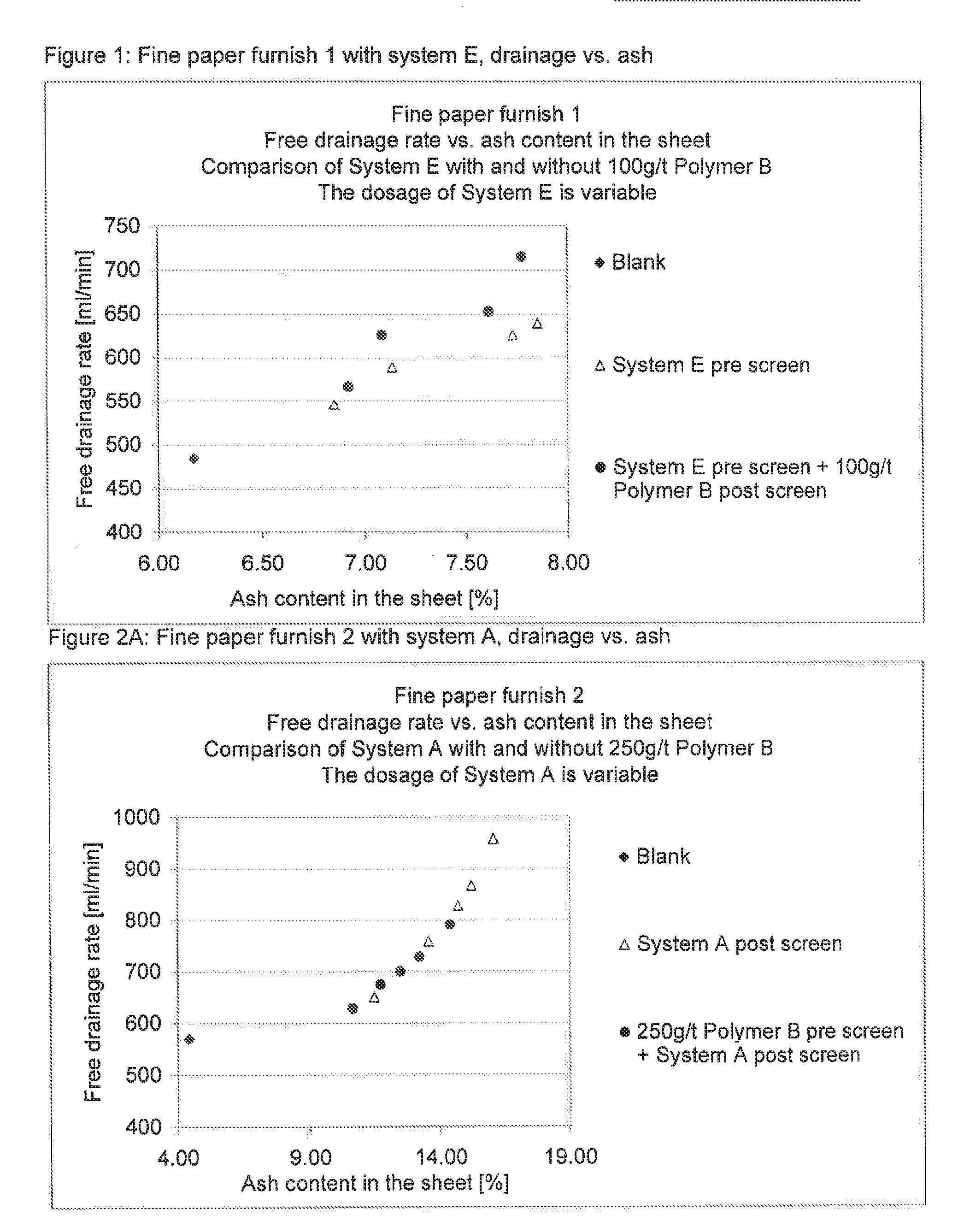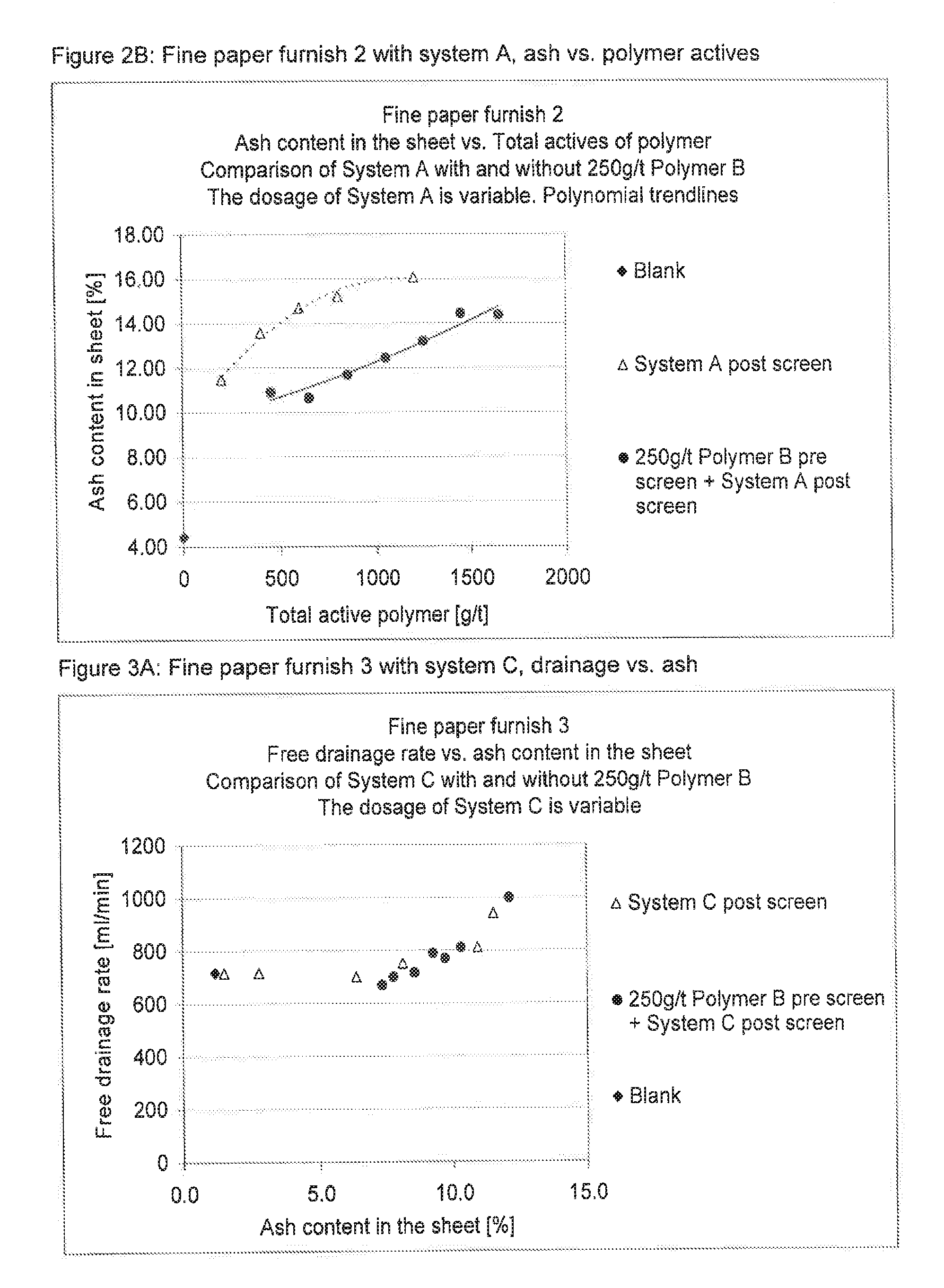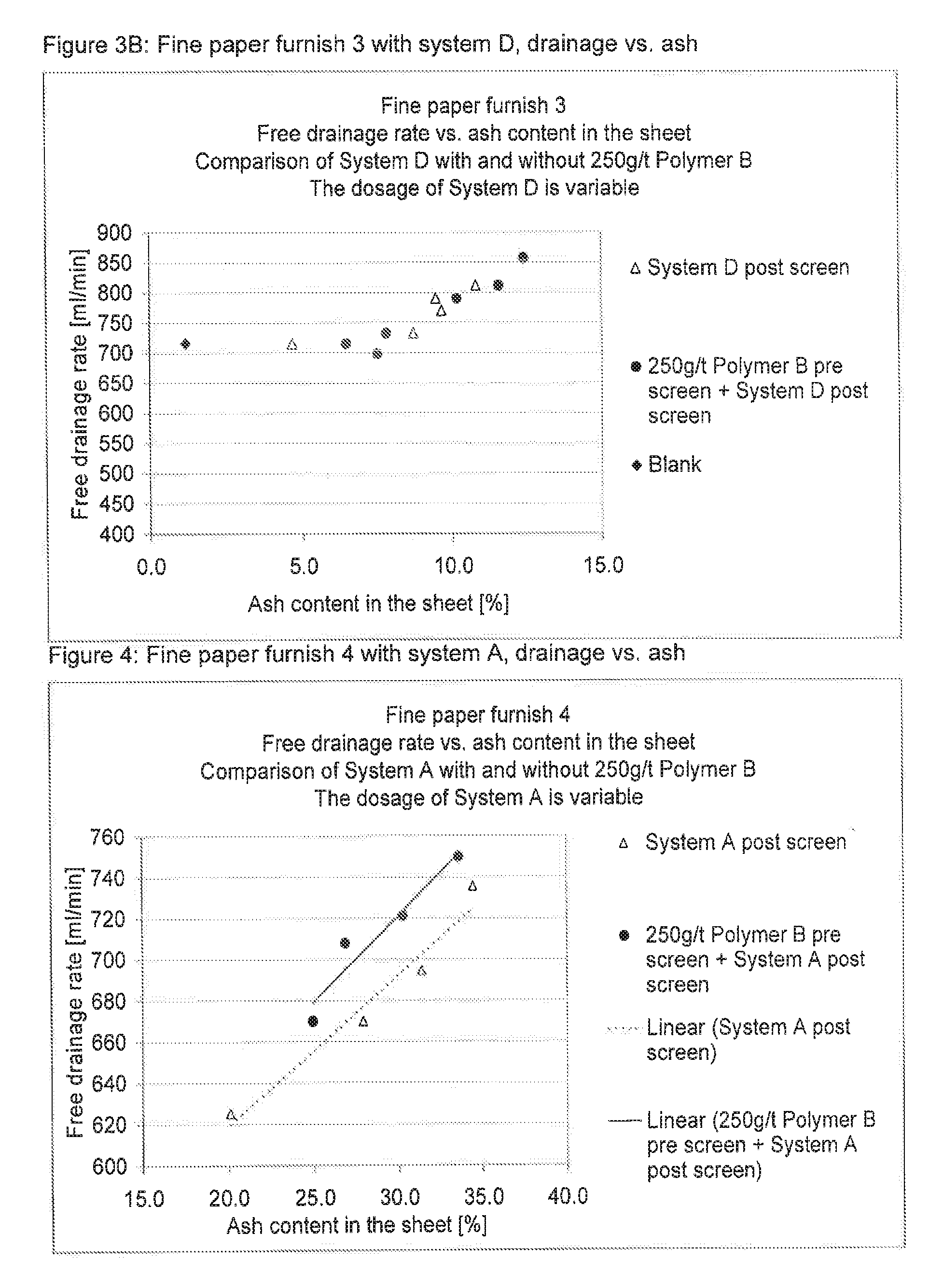Manufacture of filled paper
- Summary
- Abstract
- Description
- Claims
- Application Information
AI Technical Summary
Benefits of technology
Problems solved by technology
Method used
Image
Examples
examples
Methods
1. Preparation of Polymers
[0108]All polymers and coagulants are prepared as 0.1% aqueous solutions based on actives. The premixes consist of 50% high molecular weight polymer and 50% coagulant and are blended together as 0.1% aqueous solutions before their addition to the furnish.
[0109]Starch was prepared as 1% aqueous solution.
2. Polymers Used for the Examples
[0110]Polymer A: linear polyacrylamide, IV=9, 20% cationic charge. A copolymer of acrylamide with methyl chloride quaternary ammonium salt of dimethylaminoethyl acrylate (80 / 20 wt. / wt.) of intrinsic viscosity above 9.0 dL / g.
[0111]Polymer B: Anionic branched copolymer of acrylamide with sodium acrylamide (60 / 40) made with 3.5 to 5.0 ppm by weight methylene bis acrylamide branching agent. The product is supplied as a mineral oil based dispersion with 50% actives.
[0112]Polymer C: A 50% aqueous polyamine=poly(epichlorhydrindimethylamine) solution with 50% actives, 6-7.0 milleq / g, IV=0.2; GPC molecular weight 140.000
[0113]Po...
example i
Fine Paper Furnish 1 with System E
[0135]Example I shows a retention and drainage concept for a chemical pulp furnish as described in WO-A-9829604 comprising a first polymeric cationic retention aid (system E) to form cellulosic flocs, mechanically degrading the flocs, reflocculating the suspension by adding a second, water soluble anionic branched polymeric retention aid (polymer B) to form a sheet. As expected, total and ash retention as well as the drainage rate increase simultaneously. For instance lead 800 g / t of system E to a total retention of about 95%, to ash retention of about 73% and to a drainage rate of 625 ml / min. In contrast only 200 g / t of system E followed by 100 g / t polymer B lead to similar retention results and a higher drainage rate of 652 ml / min (see tables I.1, I.2 and FIG. 1). Thus no decoupling effect occurs that would enable the papermaker to adjust the desired ratio between total or ash retention and in addition the drainage rate.
[0136]
TABLE I.1No addition ...
example ii
Fine Paper Furnish—2 with System A
[0138]This example shows the impact of polymer B added prior to system A concerning the decoupled events of retention and drainage in fine paper. As shown in FIG. 2A the drainage profile of system A over ash content in the sheet remains unchanged. From this it follows that this preferred form of the invention does not work in chemical pulp or in other words it is not suitable for delignified fibres (see tables II.1, II.2 and FIG. 2B).
[0139]Furthermore retention deteriorates on an active polymer basis, identified as polymer B+system A (see FIG. 2B). The flocculation process becomes uneconomic and does neither provide a technical nor a cost benefit for the papermaker.
[0140]
TABLE II.1No addition of polymer B, dosage of system A = variableFirst PassFirst PassAshFreeDosage ofTotalTotal AshcontentDrainageBasisSystem ARetentionRetentionin sheetRateweight[g / t][%][%][%][mL / min][g / m2]20078.842.711.464953.240080.151.413.575854.160082.357.314.782655.680082.459....
PUM
| Property | Measurement | Unit |
|---|---|---|
| Fraction | aaaaa | aaaaa |
| Fraction | aaaaa | aaaaa |
| Percent by mass | aaaaa | aaaaa |
Abstract
Description
Claims
Application Information
 Login to View More
Login to View More - R&D
- Intellectual Property
- Life Sciences
- Materials
- Tech Scout
- Unparalleled Data Quality
- Higher Quality Content
- 60% Fewer Hallucinations
Browse by: Latest US Patents, China's latest patents, Technical Efficacy Thesaurus, Application Domain, Technology Topic, Popular Technical Reports.
© 2025 PatSnap. All rights reserved.Legal|Privacy policy|Modern Slavery Act Transparency Statement|Sitemap|About US| Contact US: help@patsnap.com



